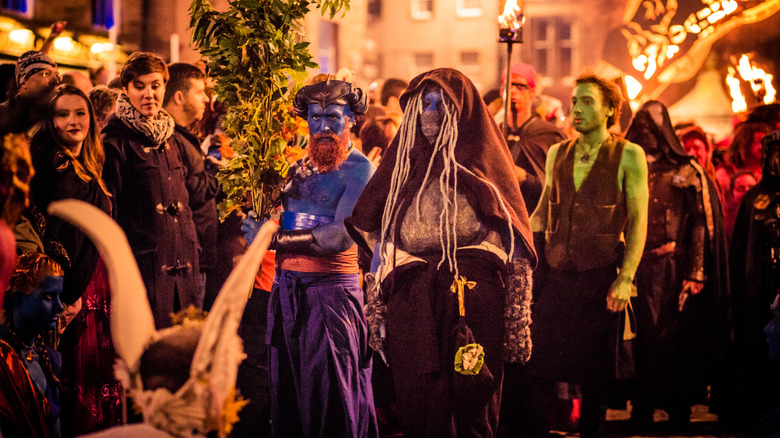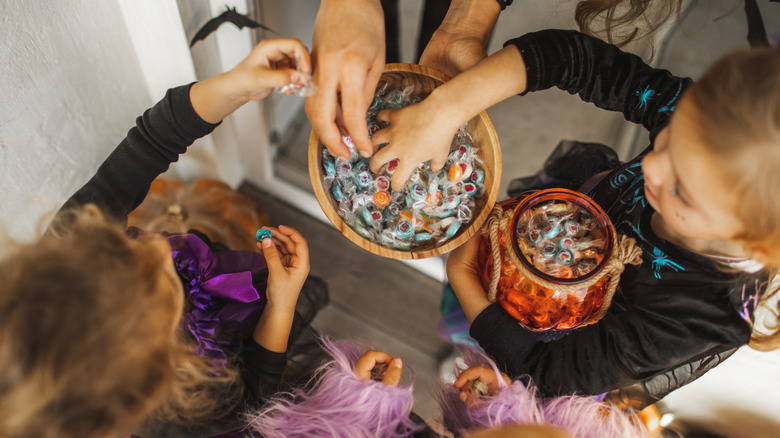Candy Wasn't Always Part Of Halloween And Trick-Or-Treating
Halloween has many fun and unique traditions, but for most children, the end-all-be-all of the autumnal holiday is trick-or-treating. Whether they're lucky enough to find a house giving out full-sized candy bars or get stuck with circus peanuts that taste like bananas, going door to door dressed in costume and waiting to see what kind of candy lands in their bag is all part of the fun — and it's been that way for more than a century. Still, Halloween traditions have undergone many changes over time, like pumpkins replacing turnips as the go-to vegetable for carving Jack-o'-lanterns, and what trick-or-treaters received in their bags is no exception.
The origins of trick-or-treating are obscure but most likely go back to Halloween's ancient roots in the pre-Christian Celtic harvest festival of Samhain. The Celtic people of the British Isles, Ireland, and Northern France, who lived more than 2,000 years ago, believed that during Samhain, the veil between this world and the next was at its thinnest, and spirits could roam free. Traditions of the holiday included leaving food out for the deceased and young people dressing up as the spirits of the dead and causing mischief. By the Middle Ages, during the Christian holiday of All Souls Day, which had supplanted Samhain, children went door to door asking for food, money, and ale (it was a different time).
From homemade treats to store-bought candy
By the early 20th century in the United States, our modern conception of trick-or-treating was becoming established. However, what costumed children received was still very different from what we consider Halloween goodies today. While ale was no longer on the list of treats, thankfully, children in the 1930s were likely to receive a wider variety of items, including homemade desserts, fruits and nuts, and even money or toys.
Following the end of sugar rationing that had taken place during World War II, pre-packaged candy became more popular. Still, as late as the 1950s, companies like Kellogg's and Kool-Aid were advertising their products as good to give out during Halloween. Yes, small cereal packages and fruit-flavored punch glasses were being handed out to trick-or-treaters. During that decade, candy companies began to ramp up advertising. By the 1970s, store-bought candy had become the standard partly because of urban legends about evil-minded people adulterating homemade treats. While the exact origins of this Halloween tradition may remain a mystery, here's a secret we'll let you in on: Stock up on post-Halloween candy sales this November for next year, but maybe think twice about the world's most sour candy (or read the warning first).

